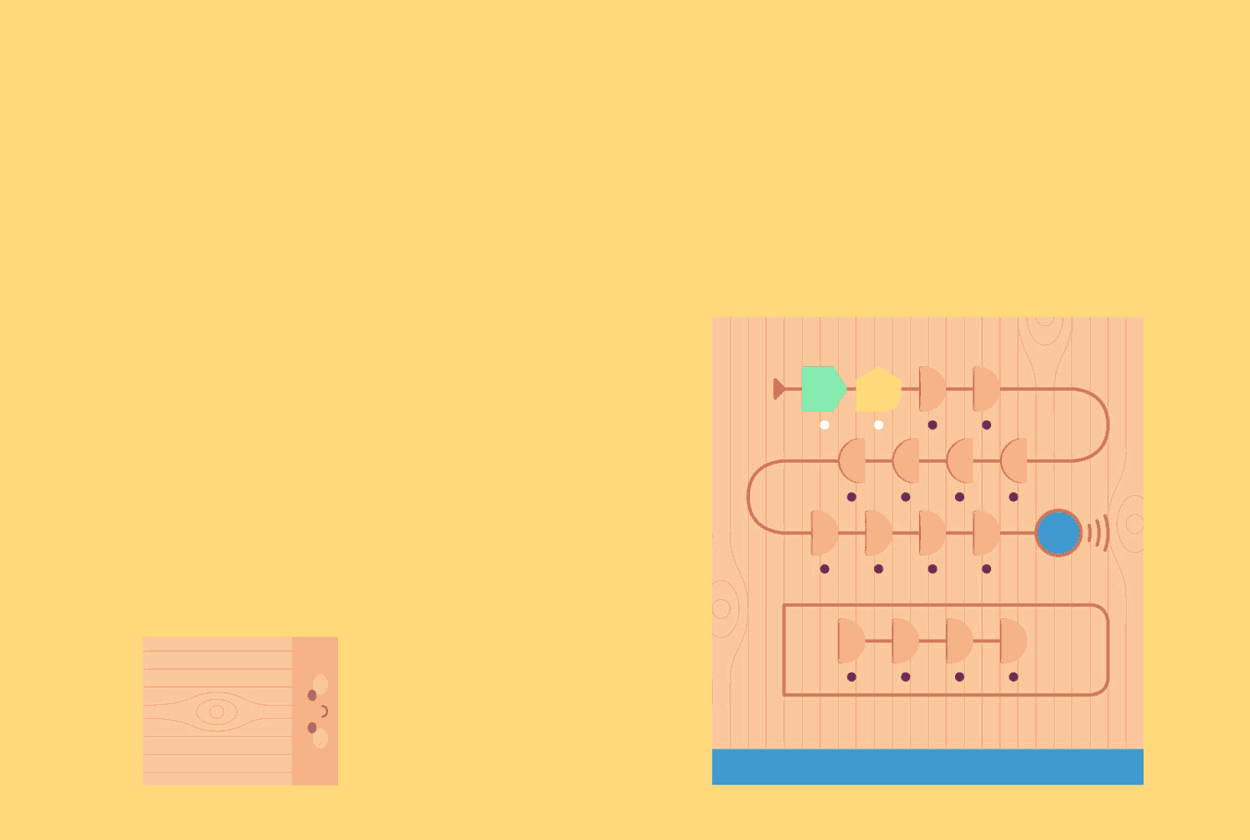
4-WEEK PROGRAM

PLAYCODE KIDS
RECOMMENDED CENTRE TYPE: ELC
RECOMMENDED AGE GROUP: 3 to 5 years old
MAXIMUM NUMBER OF CHILDREN: 25
LENGTH OF WORKSHOP: 60 minutes x 4
REQUIREMENTS: Open space area
ALL MATERIALS INCLUDED
PRICE: $1600
"With programming, children learn to think laterally when faced with a problem." ~ Cubetto
At JC Ingeium, we believe that coding skills are a vital aspect of a well-rounded education for children. Academics and educators around the world are increasingly recommending that coding and programming skills form part of early and primary school education.
Introducing young children to the concepts of algorithms, buds and queues helps them to develop important skills, such as problem solving, teamwork and creativity.
Why should kids learn coding and computational thinking at all?
Coding nurtures creative expression
Coding for kids is, at its core, a creative process. The sense of satisfaction that a child experiences after completing a code from scratch is not to be underestimated. Coding encourages children to become resourceful and imaginative, and opens up a world of infinite possibility.
Programming requires persistence and problem-solving
Creating codes through programming becomes increasingly frustrating as the complexity of those codes increases. Rather than allowing frustration to deter their efforts, coding teaches children to think outside the box and find alternative solutions rather than giving up at the first sign of difficulty.
Children learn by thinking about doing
Programming the Cubetto robot to perform a sequence teaches children to think about what they want the robot to achieve. This is a fundamental analytical skill - the consideration of how to achieve a goal, step by step - that will benefit children in other areas of their learning journey.
Each topic will teach children basic skills in programming while having while engaging with Cubetto - a learning experience through play! This 4-week program consists of one 60-minute incursion per week, giving children the opportunity to explore, create ideas, develop memory recall ability and fix mistakes ("bugs") just like a real life programmer!
These lessons are designed to engage multiple aspects of STEAM (Science, Technology, Engineering, Arts and Mathematics) in order to enhance their learning experience and provide opportunities to practise, with each new activity improving their social interaction and communication skills as well!
We bring enough sets to create small groups where children can have an enhanced face-to-face learning experience. Our Presenter will introduce Cubetto to the children and demonstrate what it can do and how children can interact with it. An invitation to feel Cubetto is an exciting opportunity that children will not want to miss!
Our friendly staff will outline clear guidelines for the children, so they all get a turn at the Robot Stations that have been set up. This is essential, as these robots are REAL. They are not toys, so care has to be taken.
After this introduction, the children engage in hands-on play with Cubetto.
4 WEEKS PROGRAM
Week 1: Introduction of Cubetto and the control board - discovering what Cubetto is and what the control board is for.
Week 2: Program Forward, respect others. Program left and right / collaborate.
Week 3: Program in 2 directions, problem solve. Program in a circle / queuing.
Week 4: Functions, feeling, algorithms. Creative thinking and storytelling.
SUBJECTS COVERED
-
Personal and Social Health
-
Literacy
-
Expressive Arts and Design
-
Maths
LEARNIG OUTCOMES
By the end of the program, children will be able to:
-
talk about Cubetto’s parts
-
understand how Cubetto's face changes when happy/sad
-
make Cubetto move
-
take turns
-
tell a simple story
-
explain what an algorithm is
-
use and name left/right turns
-
predict what an algorithm will do
-
write a simple algorithm
-
count to five (or ten)
-
predict what an algorithm will do
-
make new parts for a game
-
say what the function block does
-
put numbers in order

Meets Australian National Digital Technologies Curriculum. Children will:
-
recognise and explore digital systems (ACTDIK001)
-
follow, describe and represent a sequence of steps and decisions (algorithms) needed to solve simple problems (ACTDIP004)

